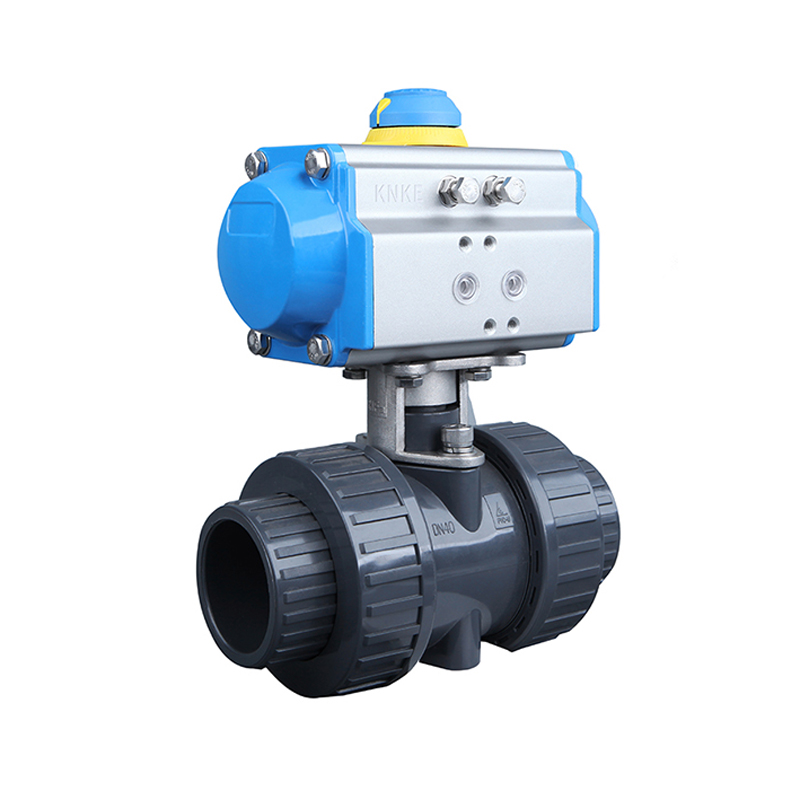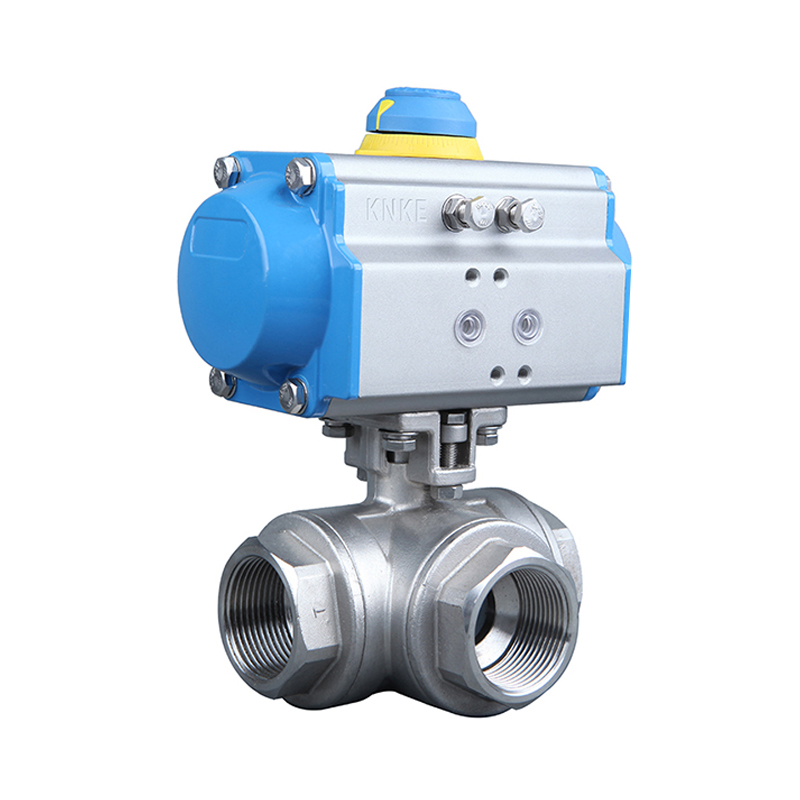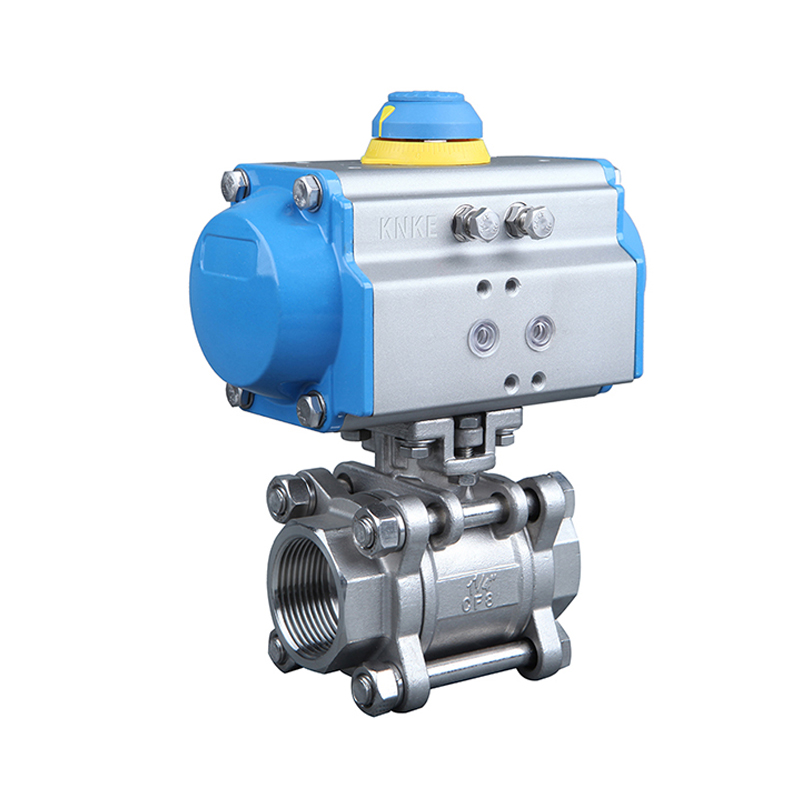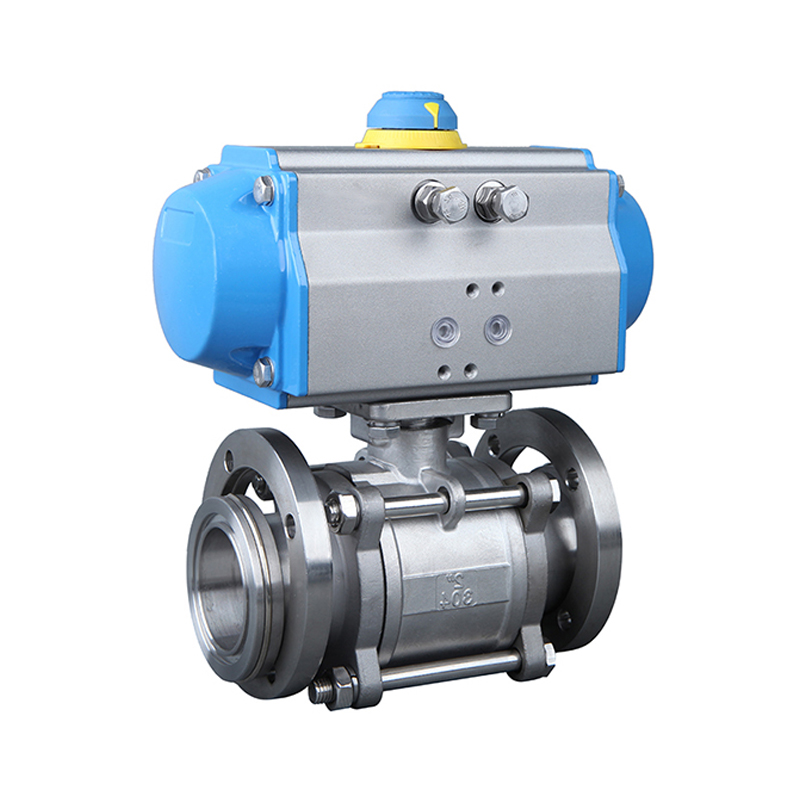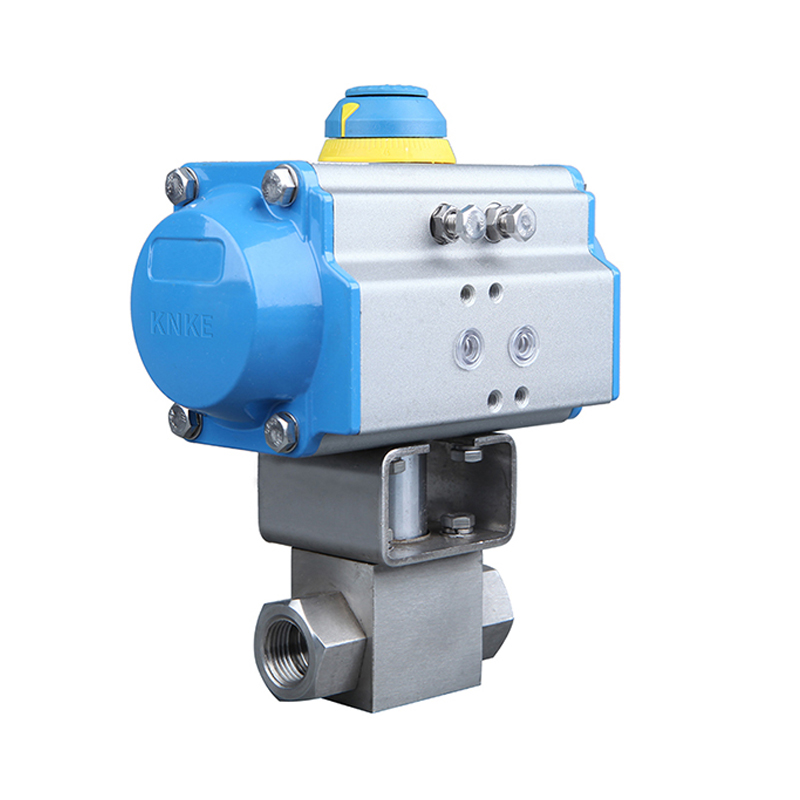Description
The KNKE pneumatic ball valve uses a high-precision pneumatic actuator and precision-cast ball valve. The pneumatic actuator provides a quick execution speed, with the fastest opening and closing time of just 0.05 seconds per cycle, which is why it is often called a “quick shut-off ball valve.” The pneumatic ball valve is often configured with various accessories, such as solenoid valves, air filter regulators, limit switches, positioners, and control boxes. These accessories help achieve both local control and remote centralized control, allowing operators to manage valve operations from the control room. This reduces the need for manual intervention in hazardous locations or at elevated heights, saving human resources, time, and improving overall safety.
KNKE Pneumatic Ball Valve Selection Parameters
| Parameter | Description |
| Product Name | Pneumatic Ball Valve |
| Nominal Diameter | DN15 to DN400 |
| Structure Type | Spherical |
| Nominal Pressure | 1.6Mpa to 32.0Mpa |
| Connection Type | Flange, Wafer, Threaded, Welded |
| Applicable Temperature | ≤550ºC |
| Drive Type | Pneumatic (Optional manual override) |
| Body Material | Cast Steel, Stainless Steel |
| Manufacturing Standard | GB (China), DIN (Germany), API/ANSI (USA) |
| Applicable Media | Water, Oil, Gas, Liquid |
| Brand Name | KNKE |
Product Description
The KNKE pneumatic ball valve is made of a high-precision pneumatic actuator combined with a precision-cast ball valve. It is mainly classified into two types: pneumatic soft-seal ball valves (≤200°C) and pneumatic hard-seal ball valves (≤550°C). The valve is compact, reliable, easy to maintain, and has low flow resistance. It can be equipped with accessories like limit switches, solenoid valves, and pressure regulators (0.4-0.7MPa) for control. It is especially suitable for media that are viscous or contain particles or fibers. The pneumatic ball valve is widely used in industries such as petroleum, chemical, education, light industry, high-pressure equipment, pharmaceuticals, and paper production for remote or local control in automatic control systems.
Key Features of KNKE Pneumatic Ball Valve
- Low Fluid Resistance: The fluid resistance of the ball valve is the lowest among all valve types. Even for reduced bore ball valves, the fluid resistance remains minimal.
- Thrust Bearing for Reduced Friction: The thrust bearing reduces the friction torque of the valve stem, ensuring the stem’s operation is balanced and flexible over time.
- Reliable Valve Seat Sealing: The valve seat is made from materials like PTFE, which are easy to seal. The sealing ability improves as media pressure increases.
- Reliable Stem Seal: Since the valve stem only rotates and does not move up or down, the packing seal remains intact, and its sealing ability improves as the pressure increases.
- Long Service Life: The PTFE material has good self-lubrication properties, resulting in minimal friction loss with the ball and extending the ball valve’s lifespan.
- Safety Design: The bottom-mounted valve stem and convex step on the valve stem prevent it from ejecting under fire conditions. If the stem seal is compromised, metal contact forms between the convex step and the valve body, ensuring the stem remains sealed.
Technical Specifications of KNKE Pneumatic Ball Valve
| Technical Parameter | Details |
| Nominal Diameter (DN) | 15, 20, 25, 32, 40, 50, 65, 80, 100, 125, 150, 200 |
| Rated Flow Coefficient KV | 21, 38, 72, 112, 170, 273, 384, 512, 940, 1452, 2222, 3589 |
| Nominal Pressure (MPa) | PN1.6, 2.5, 4.0, 6.4 MPa; ANSI 150, 300LB |
| Allowable Differential Pressure (MPa) | ≤ Nominal Pressure |
| Valve Body Type | Two-piece cast ball valve |
| Connection Type | Flange, Welded, Threaded |
| Valve Core Type | “O” type ball core |
| Sealing Material | V-shaped PTFE packing, flexible graphite |
| Flow Characteristic | Fast open type (approximate) |
| Action Range | 0° to 90° |
| Leakage (Q) | Less than 0.01% of rated KV (GB/T4213-92) |
| Rangeability | 250:1, 350:1 |
| Actuator Configuration | Compatible with GT, SR, ST, AT, AW series pneumatic actuators |
| Control Type | On/off (two-position control), Regulating (4-20mA control) |
Actuator Parameters
| Parameter | Description |
| Actuator Models | GT, AT, AR, AW series single/double acting actuators |
| Air Supply Pressure | 0.4 to 0.7MPa |
| Air Source Interface | G1/4″, G1/8″, G3/8″, G1/2″ |
| Environment Temperature | -30°C to +70°C |
| Action Type | – Single Acting: Air-to-close (Fails open, FO) or Air-to-open (Fails closed, FC) |
| – Double Acting: Air-to-close or Air-to-open (Fails in last position, FL) | |
| Compatible Accessories | Positioner, solenoid valve, air filter regulator, position lock valve, limit switch, valve position transmitter, manual override |
Material of Main Parts
| Component Name | Material |
| Valve Body | WCB, 304 (CF8), 316 (CF8M), 316L (CF3M) |
| Ball | 2Cr13 with nitriding, 304, 316, 316L |
| Valve Stem | 2Cr13, 304, 316, 316L |
| Valve Seat Sealing Ring | PTFE, PPL, Metal (hard alloy) |
| Packing | V-shaped PTFE, flexible graphite |
Choosing a Pneumatic Actuator
The double-acting piston pneumatic actuator mainly consists of components such as cylinders, end caps, pistons, gear shafts, limit blocks, adjusting screws, and indicators. It uses compressed air as power, pushing the piston and driving the gear shaft to rotate 90°, which drives the ball valve to open or close.
The single-acting piston pneumatic actuator includes a return spring between the piston and end cap. When air pressure fails, the spring pushes the valve back to its original position (open or closed), ensuring safety. For single-acting cylinders, it is important to determine whether the valve should be normally open or normally closed.
Currently, there are GT, AT, and AW types of cylinders:
- GT Cylinder: Early design and predecessor to the AT type.
- AT Cylinder: An improved version of GT, it is now the mainstream product. It can be mounted directly to a ball valve without a bracket, making it faster and more secure. It also allows for 0° and 90° position adjustments.
- AW Cylinder: Mainly used for large-diameter ball valves with large output force, using a piston fork structure.
Selection of Pneumatic Accessories
- Solenoid Valve: Double-acting cylinders typically use a two-position five-way or three-position five-way solenoid valve. Single-acting cylinders use a two-position three-way solenoid valve. Options for DC24V or AC220V voltage are available. Explosion-proof requirements should also be considered.
- Limit Switch: Converts actuator rotation into contact signals, sending feedback to the control system about the valve’s open or closed position. Available in mechanical or magnetic induction types, with explosion-proof versions as needed.
- Manual Override: Installed between the ball valve and cylinder, allowing manual operation during air pressure failures to ensure system safety and continuity of production.
- Air Source Processing Units: Consist of dual or triple units, providing filtration, pressure reduction, and oil mist to protect the cylinder from contaminants that could cause jamming.
- Valve Positioner: Required for proportional control pneumatic ball valves, mainly for pneumatic V-type ball valves. Accepts 4-20mA input and may provide feedback. Explosion-proof types are available.
- Quick Exhaust Valve: Accelerates valve opening/closing speeds by bypassing the solenoid valve to quickly release air from the cylinder.
- Pneumatic Amplifier: Increases the flow rate to the actuator based on the positioner’s output. Often used to reduce transmission delays over long distances (0-300 meters).
- Position Lock Valve: Keeps the valve in position during low air supply pressure by cutting off the air supply, restoring the original position once the pressure normalizes.
When selecting a pneumatic ball valve, consider factors like the ball valve, actuator, and accessories. Any mistakes in these choices can impact the valve’s performance, sometimes minor but often severe enough to fail in meeting operational requirements. Therefore, ensure you understand the process parameters and requirements when making your selection.

